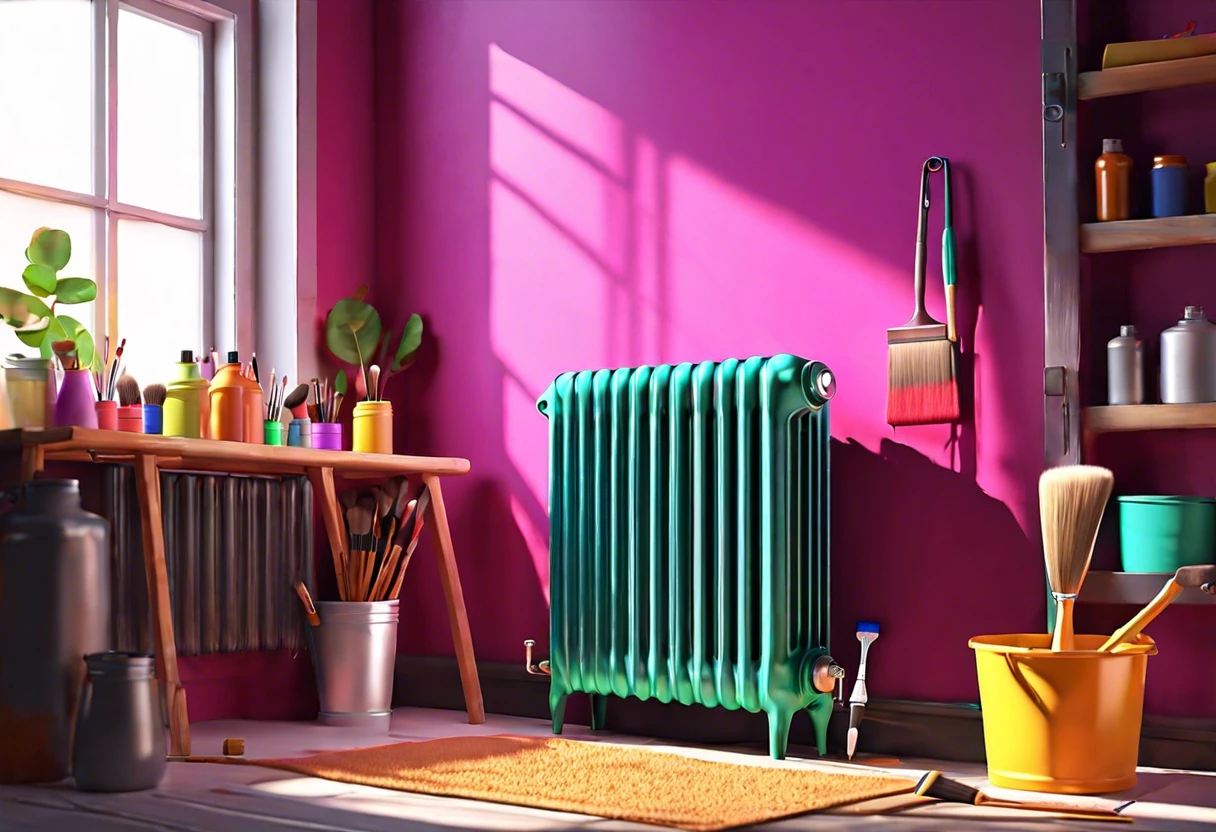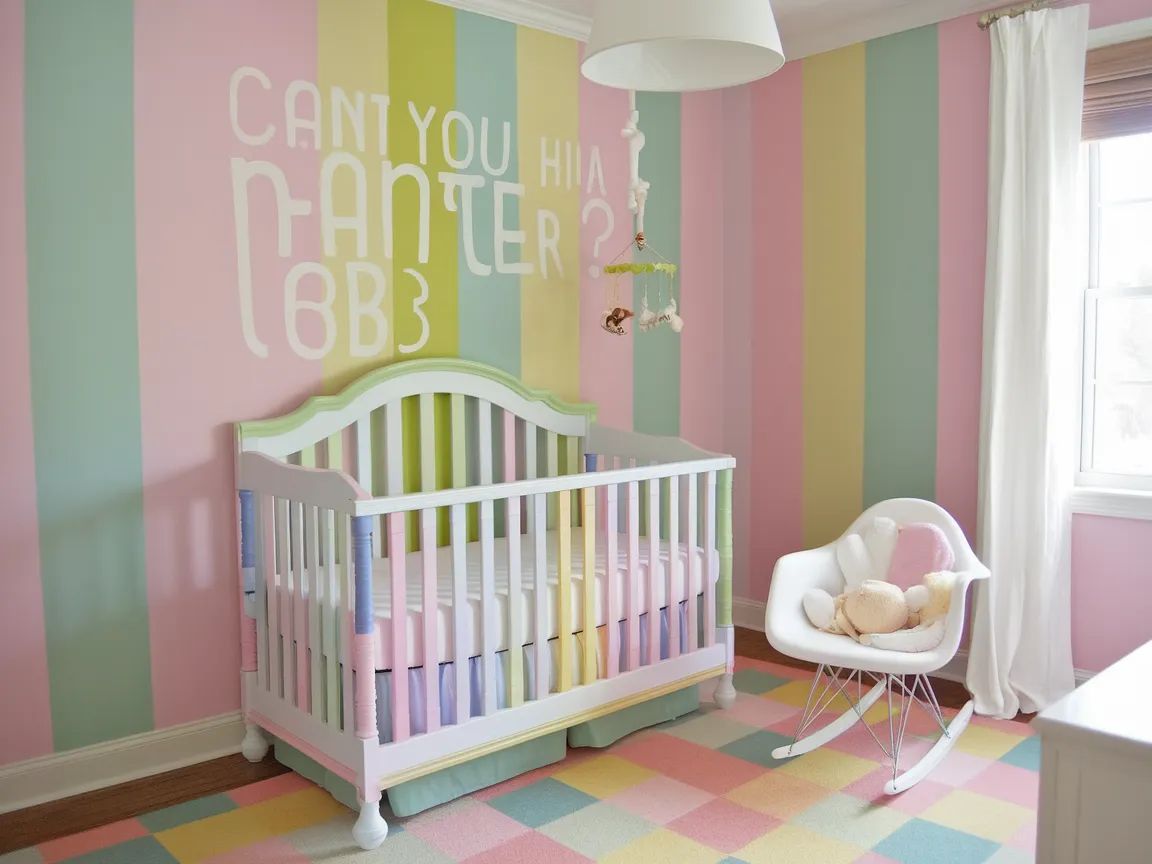Can You Paint a Radiator?
Published on: April 9, 2025 | Last Updated: January 7, 2025
Written By: Sarah McClintock
A radiator is a metal box that keeps your room warm when it’s cold outside. It works by letting hot water flow through, making the metal hot and sending heat into your room.
Can you paint a radiator? It’s vital to know this if you want to refresh your space or match it with your decor. I once painted a radiator in my living room and it made such a difference! It turned a boring old heater into a stylish feature of the room.
In this guide, we’ll explore what a radiator is, the steps to effectively paint a radiator, types of paint you can use, common issues you might face, and some creative DIY project ideas for radiator makeovers. You’ll learn how to make small spaces even cozier by incorporating the right paint finishes and colors, while discovering answers to questions like how do you paint a radiator and what paint finish for living room works best.
Contents
- 1 Can You Paint a Radiator?
- 2 A key heating element in many buildings
- 3 Before You Start Painting Your Radiator
- 4 Steps to Effectively Paint a Radiator
- 5 Different Techniques for Painting Your Radiator
- 6 Types Of Paint Suitable for Radiators
- 7 Factors Affecting the Painting Process Of a Radiator
- 8 Radiator Painting: Frequently Overlooked Tips
- 9 Common Issues When Painting a Radiator
- 10 Finishing Touches to Enhance Your Radiator
- 11 Creative DIY Project Ideas for Radiator Makeovers
- 12 Frequently Asked Questions (FAQs)
- 13 Conclusion
- 14 Additional Resources
Can You Paint a Radiator?
Absolutely, you can paint a radiator. Use heat-resistant, non-toxic paint designed for metals. Just clean it well and apply thin coats for an even finish. Make sure it’s cool before you start!
A key heating element in many buildings
A radiator is a key heating element in many buildings. It circulates hot water or steam, transferring heat to the surrounding air and keeping spaces warm—around 21°C (70°F).
The Finishing Touch
A freshly painted wall is a blank canvas. The best way to bring your room to life is with a single piece of statement art that ties everything together.
Browse Wall Art at Big Wall DecorYou might wonder, can you paint a radiator? I’ve tried it before. It can give your space a fresh look, but it’s a whole different ball game.
I’ll never forget the time I painted my radiator a vibrant red. It transformed the room, acting as a statement piece. When considering whether you can paint a radiator, think about the specific paint needed. Specialized paints can withstand higher temperatures and help maintain radiator performance. If you’re curious about painting fabric surfaces like clothing, painting techniques for furniture extend beyond metal. It’s a fun way to add personality while ensuring your radiator stays efficient.
Before You Start Painting Your Radiator
What do you need to start?
- Radiator Cleaner: Use a product like “Zep Heavy-Duty Cleaner.” It’s crucial to remove grime for proper paint adhesion.
- Painter’s Tape: Choose “3M ScotchBlue Painter’s Tape.” It masks off areas and prevents paint from getting on your walls or floors.
- Spray Paint: Go for “Rust-Oleum High-Heat Spray Paint.” This is essential for durability, as radiators can get hot during use.
- Drop Cloth: Get a durable drop cloth, like “Room Essentials Canvas Drop Cloth.” This protects your floors while painting.
- Safety Goggles: Don’t skimp on safety; grab “3M Safety Goggles.” You need these to protect your eyes from dust and fumes.
We covered preparation, safety tips, and materials needed for radiator painting. We will now cover steps to effectively paint a radiator.
Also See: How Much Do A Painter Make? Salary Insights

Steps to Effectively Paint a Radiator
Now, we’ll cover how to paint a radiator efficiently. Let’s make your radiator look fresh and snazzy!
-
Prepare the Workspace
Clear the area around your radiator. A clean workspace means fewer interruptions and helps avoid mess.
Use drop cloths to protect your floor, as painting radiators can sometimes get drippy, especially with spray paint.
-
Choose the Right Paint
Select a heat-resistant paint designed for metal. This paint can withstand temperatures up to 90°C (194°F) without peeling or fading.
Acrylic or satin finishes work best. Remember, glossy finishes shine, while matte finishes provide a rustic look.
-
Clean the Radiator
Dust and grime can spoil your final paint job. Use a diluted vinegar solution or soapy water to wipe down the radiator.
I once skipped cleaning, leading to blemishes shortly after painting. Ensure thorough cleaning for smooth paint application.
-
Apply Primer (if Necessary)
If your radiator has rust spots, apply a metal primer. A good primer boosts the paint’s adhesion and lifespan.
Your primer choice should match the paint type (Oil-based or Water-based). Always check the paint labels for compatibility!
-
Paint the Radiator
Start painting from the top to the bottom using even strokes. Use a small roller for larger surfaces and a brush for tight spots.
Allow each coat to dry before applying the next. Two to three coats usually provide the best coverage, depending on the paint type.
-
Final Inspection and Touch-ups
Check for any spots needing attention once the paint has dried. Touch them up with a small brush for a seamless finish.
Step back and admire your newly painted radiator! There’s nothing like fresh paint, right?
That covers the key steps for painting a radiator. Let’s now take a look at various techniques for this process.
The Finishing Touch
A freshly painted wall is a blank canvas. The best way to bring your room to life is with a single piece of statement art that ties everything together.
Browse Wall Art at Big Wall DecorDifferent Techniques for Painting Your Radiator
Wanna know how to paint your radiator like a pro? Check these techniques!
| Technique | Description | Best For |
|---|---|---|
| Brush Painting | Use a brush for detailed areas and tight spots. It provides precision and control. | Intricate designs or when touching up. |
| Roller Painting | A small roller works great for larger sections, creating an even finish. | Quick, large surface coverage. |
| Spray Painting | Spraying allows for an even coat, without brush marks. | A smooth finish and hard-to-reach areas. |
We’ve wrapped up various techniques for painting your radiator here. Let us turn our attention to suitable paint types.
Types Of Paint Suitable for Radiators
Let’s explore the types of paint for radiators: enamel paint, heat-resistant paint, metal primer, and spray paint.
-
Enamel Paint
Enamel paint provides a hard, glossy finish ideal for radiators. It’s durable and withstands high temperatures up to 120°C (248°F).
-
Heat-resistant Paint
Heat-resistant paint is designed for surfaces that get very hot. It can handle temperatures up to 200°C (392°F), ensuring bright colors won’t fade or peel.
-
Metal Primer
A quality metal primer prevents rust and promotes paint adhesion. It seals the radiator’s surface and withstands extreme heat for a lasting finish.
-
Spray Paint
Spray paint is easy to apply and covers well. Choose a heat-resistant option for a beautiful finish that can make your radiator look brand new.
I recommend heat-resistant paint. It keeps the color vibrant and holds up against the heat from my radiator, staying in excellent condition.
We covered suitable paint types for radiators. We will now cover factors influencing the radiator painting process.

Factors Affecting the Painting Process Of a Radiator
What factors should you consider before starting this painting project?
-
Surface Preparation: A clean, smooth radiator ensures better paint adhesion and finish.
-
Type of Paint: Heat-resistant paint prevents bubbling and increases durability.
-
Temperature and Humidity: Ideal conditions (50°F to 85°F or 10°C to 30°C) help the paint dry evenly.
-
Radiator Condition: Rusty or damaged radiators need more preparation to ensure lasting paint.
Radiator Painting: Frequently Overlooked Tips
Painting a radiator isn’t just about color; it’s also about technique and preparation.
Prepping Your Radiator for a Flawless Finish
Want a flawless finish? Check these important steps:
- Inspect for Leaks: Before painting, ensure your radiator isn’t leaking. A leak can ruin your paint job and create a mess!
- Heat Up Before Painting: Warm the radiator slightly before cleaning and painting. It helps the cleaner work better and the paint adhere.
- Consider Ventilation: Open windows while painting for fresh air, especially if using spray paint. Fresh air makes the process more pleasant.
Why Radiator Color Can Affect Room Temperature
Believe it or not, color choice affects temperature! Here’s how:
| Color | Heat Reflection | Temperature Impact |
|---|---|---|
| White | Highest Reflection | Can distribute heat effectively, making rooms feel warmer. |
| Light Colors | Moderate Reflection | Good for enhancing comfort, keeps the warmth more balanced. |
| Dark Colors | Lowest Reflection | Can absorb heat, making areas feel warmer but may lead to uneven heating. |
Common Issues When Painting a Radiator
My friend once tried painting a radiator but didn’t remove the rust. The new paint peeled off quickly. You’ve got to start with a clean surface, right?
To tackle this, sand the rust off with 120-grit sandpaper. Then, apply a rust-inhibiting primer before the top coat. This ensures proper paint adhesion and requires high-heat enamel. Simple, but it works. If you need tips on adjusting paint consistency for optimal coverage, you can thin paint effectively.
The Finishing Touch
A freshly painted wall is a blank canvas. The best way to bring your room to life is with a single piece of statement art that ties everything together.
Browse Wall Art at Big Wall Decor
Finishing Touches to Enhance Your Radiator
After your paint has cured for 48 hours, apply a heat-resistant sealant like Rust-Oleum High Heat Clear. This enhances durability and protects the surface.
Inspect for bubbling or peeling. A post-paint inspection requires checking the entire radiator to ensure it retains a uniform color and signals if any touch-ups are needed.
I’d personally test the paint’s heat tolerance by heating the radiator to 100°F (38°C). A careful temperature check guarantees long-lasting, beautiful results on your painted radiator.
Creative DIY Project Ideas for Radiator Makeovers
Wanna spice up your dull radiator? How about transforming it into a colorful garden shelf or a funky radiator cover?
For my garden shelf, I’d grab some wooden planks and paint. Costs around $50-$100 and takes about 2-4 hours. Build that radiator cover with metal mesh and lumber, maybe $80 and 3-5 hours.
If you’re wondering, ‘can you paint a radiator?’, yes! You can use radiator paint or even chalk paint for a refreshing look. I once crafted a fabric radiator cover, wrapping the radiator in bold, patterned cotton. It’s a showstopper and super easy! When preparing to paint your radiator, mastering the right oil-based paint application techniques can make a significant difference in your final finish.
Frequently Asked Questions (FAQs)
Can I Use Regular Paint on a Radiator?
No, you can’t use regular paint on a radiator. Regular paint may not withstand the high temperatures radiators reach, often over 80°C (176°F). Use heat-resistant radiator paint for better durability and safety.
Do I Need to Sand the Radiator Before Painting?
Yes, you need to sand the radiator before painting. Sanding creates a rougher surface, allowing paint to adhere better. You’ll improve adhesion, ensuring the paint doesn’t peel over time.
How Many Coats Of Paint Should I Apply to My Radiator?
You should apply at least two coats of paint to your radiator. This often provides the best color depth and coverage, resulting in a smooth, professional finish that lasts longer.
What is the Best Way to Clean a Radiator Before Painting?
The best way to clean a radiator before painting is to use warm, soapy water. Remove dust and grime thoroughly; a clean surface helps the paint stick, ensuring a lasting finish.
Can I Paint a Radiator While It’s Still Hot?
No, you shouldn’t paint a radiator while it’s still hot. Painting on a hot surface can cause the paint to dry too quickly, leading to a poor finish. Wait for the radiator to cool down for better results. If you’re struggling with hard-to-reach areas, you might want to explore some professional painting techniques behind radiators.
What Type Of Paint Should I Use for Radiators?
You should use a specialized radiator paint for radiators. This type of paint is formulated to withstand the heat and often contains properties for better energy efficiency. Choose one that fits your décor, too! When selecting exterior paints for similar heat-resistant applications, you might want to explore Benjamin Moore Aura exterior options.
Can I Spray Paint My Radiator?
Yes, you can spray paint your radiator. Spraying can give an even coat and saves time. Just make sure to use spray paint designed for high temperatures to avoid issues in the future.
How Long Does Radiator Paint Take to Dry?
Radiator paint usually takes between 1 to 4 hours to dry. A thorough drying time is vital to ensure a durable finish. Always check the paint’s label for exact drying times.
Is It Safe to Paint Over Old Radiator Paint?
Yes, it’s safe to paint over old radiator paint, but proper preparation is key. Make sure the old paint is clean, undamaged, and the right type; otherwise, it may lead to chipping or peeling.
Conclusion
I hope this guide provided you with all the necessary information about painting radiators. We discussed what a radiator is, effective painting steps, suitable paint types, color choices, factors influencing the process, common challenges, and finishing touches that will enhance your radiator’s appearance.
Refreshing your radiator with paint is definitely achievable; just be sure to follow the right steps, select appropriate paint, and consider factors like temperature and humidity. If you have any further questions about painting radiators or related projects, don’t hesitate to reach out.
For additional insights and tips, explore Paint Answers.
Additional Resources
- Gurney, J. (2009). Color and Light: A Guide for the Realist Painter. Kansas City, MO: Andrews McMeel Publishing.
- How To Paint A Radiator | Benjamin Moore
- How to Paint a Radiator: A DIY(ish) Approach – Painting by the Penny
- How to paint a radiator | Ideas & Advice | DIY at B&Q









